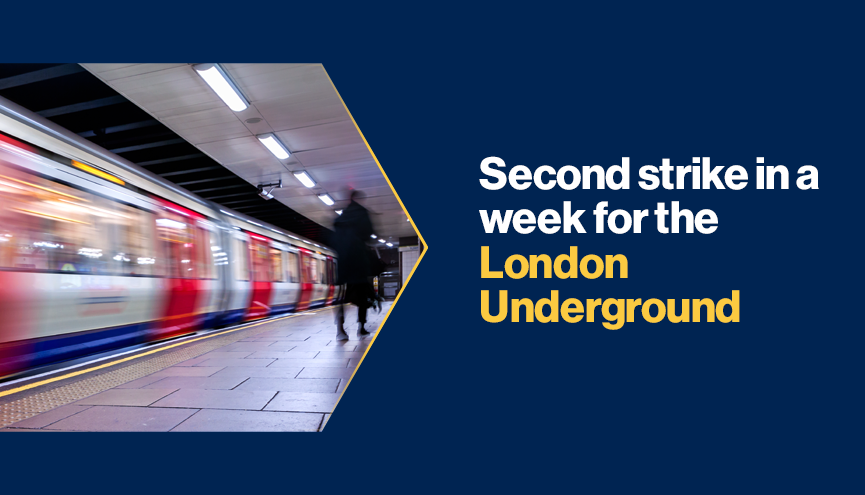Second strike in a week for the London Underground

A second strike in a week for the London Underground took place on Thursday, causing severe disruption to the capital’s travel network. This latest strike follows similar actions on Tuesday, where services were reduced to a partial shuttle service on small sections of underground lines, resulting in overcrowding on buses and disruption continuing into Wednesday morning.
The strikes were enacted by around 10,000 members of the National Union of Rail, Maritime and Transport (RMT) due to a dispute over jobs, pensions and working conditions on the Underground.
Advice on the Transport for London (TfL) website warned that on strike days it is “highly likely no London Underground services will run.” Therefore, disruption should be expected across all lines and stations throughout the day. Indeed, TfL advised travellers to consider working from home on Thursday and to travel later in the day on Friday, 4 March, as no services are expected before 8am.
To ensure a minimum of continuity, TfL directed commuters to other services which were not directly impacted by the strikes (London Overground, DLR, TfL Rail and London Trams), but as expected this resulted in crowding and congestion, requiring commuters to plan for longer journey times. TfL also directed users to its TfL Go app and Journey Planner service, which provides travel updates and allows passengers to plan their route in advance. These tools provide live updates on impacted lines and services throughout the strike action, showing which lines are able to run a limited service in real-time as the situation changes throughout the day.
Business continuity planning or contingency planning for a strike is not an easy task. Charlie Maclean-Bristol explains that during a strike “you can lose a whole department or section of your workforce and the strikers’ intention is to stop your processes and show their importance to the organization.” In this scenario, he explains, the business continuity manager plays a difficult role where they need to protect the organization from the impact of incidents and disruptions, but without breaking or mitigating the effects of a strike. “It may not be possible to bring in temporary staff, redeploy staff from other areas or rely on mutual aid. Staff may not be prepared to cross the picket line or bringing in additional staff may be inappropriate and make the relationship with the strikers worse.”[1]
Maclean-Bristol recommends organizations to conduct threat analysis against the possibility of a strike. Moreover, he says, this should be extended to “your key suppliers and look at the likelihood of which groups of staff could go on strike and the impact of strikes over different timescales.” In the UK, there is a legislation advantage where there needs to be plenty of warning for strike action, which provides organizations with time to plan.
[1] https://www.planbconsulting.co.uk/knowledge-zone-articles/strikes-and-continuity/










































